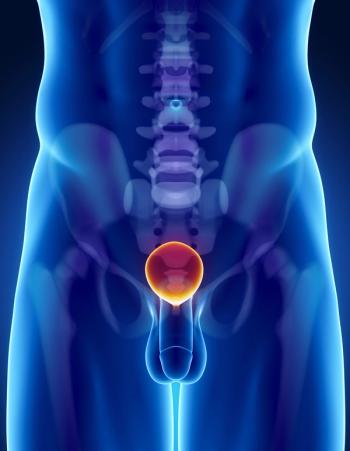
Miami Breast Cancer Conference® Abstracts Supplement
- 42nd Annual Miami Breast Cancer Conference® - Abstracts
- Volume 39
- Issue 4
- Pages: 38-39
TPS 89 A Randomized Phase 3 Study of First-Line Saruparib (AZD5305) Plus Camizestrant Versus CDK4/6i Plus Physician’s Choice Endocrine Therapy or CDK4/6i Plus Camizestrant in Patients With HR+/HER2– Advanced Breast Cancer With BRCA1/BRCA2/PALB2 Mutations (EvoPAR-B)
Background
Emerging evidence indicates that homologous recombination deficiency (HRD) contributes to resistance to CDK4/6 inhibitors (CDK4/6i) plus endocrine therapy (ET). Patients with germline or somatic mutations in BRCA1, BRCA2, and/or PALB2 genes (BRCA1 mutation/BRCA2 mutation/PALB2 mutation) and hormone receptor–positive/HER2-negative (HR+/HER2–) advanced breast cancer have poorer outcomes with first-line standard-of-care CDK4/6i plus ET than patients without these mutations. Clinical benefit with PARP inhibitors (PARPi) has been demonstrated in patients with HRD breast cancer, and PARPi are approved for the treatment of patients with germline BRCA1/BRCA2 mutations and HR+ /HER2– early or advanced breast cancer. Clinical trials have shown that PARPi use in early lines of therapy can result in a greater magnitude of benefit. PARPi use may also induce reversion mutations that restore homologous recombination proficiency, potentially sensitizing tumors to CDK4/6i. Saruparib (AZD5305) is a first-in-class highly selective PARP1 inhibitor that has increased potency and improved pharmacokinetic and pharmacodynamic properties compared with other approved PARPi. The phase 3 EvoPAR-Breast01 study (NCT06380751) is evaluating the efficacy and safety of saruparib plus camizestrant, a next-generation oral selective estrogen receptor degrader (SERD) and pure estrogen receptor antagonist, vs physician’s choice of CDK4/6i plus ET or CDK4/6i plus camizestrant in participants with germline/somatic BRCA1 mutation/BRCA2 mutation/PALB2 mutation HR+/HER2– advanced breast cancer.
Materials and Methods
EvoPAR-Breast01 is a randomized, open-label, 3-arm, multicenter, global study. Study design and eligibility criteria are shown in the Figure. Participants will be randomized 2:2:1 to receive saruparib plus camizestrant, physician’s choice CDK4/6i (abemaciclib, ribociclib, or palbociclib) plus physician’s choice ET (fulvestrant, letrozole, anastrozole, or exemestane), or physician’s choice CDK4/6i plus camizestrant, respectively. Treatment will continue until disease progression per RECIST v1.1, unacceptable toxicity, or participant-initiated withdrawal. The primary end point is progression-free survival (PFS) by blinded independent review committee in the saruparib plus camizestrant vs CDK4/6i plus ET arms. Overall survival (OS) is a secondary end point. Planned statistical analyses of PFS and OS will be conducted using a stratified log-rank test.
Status
Participant enrollment is ongoing across 185 trial locations in 20 countries. Approximately 500 participants will be randomized across the 3 arms.
Articles in this issue
Newsletter
Stay up to date on recent advances in the multidisciplinary approach to cancer.


















































































